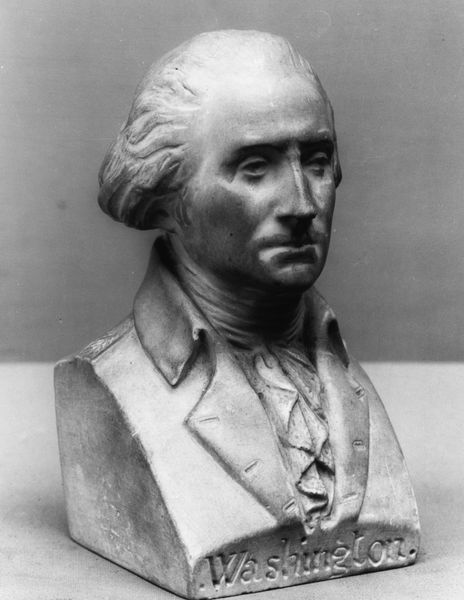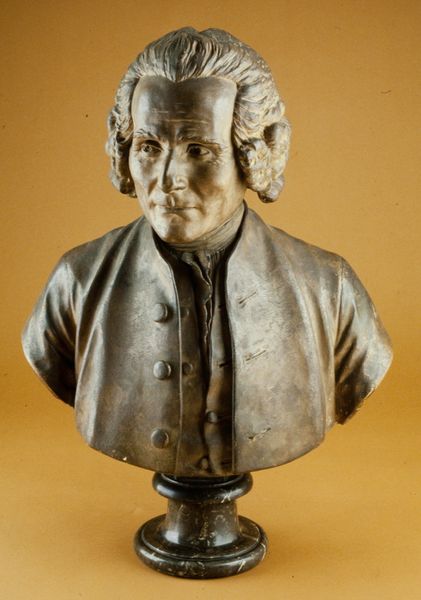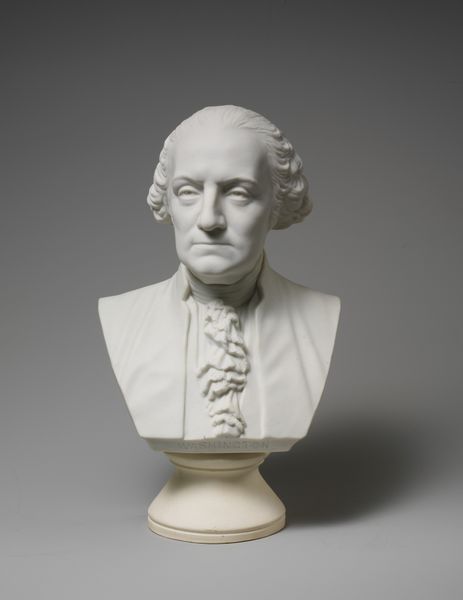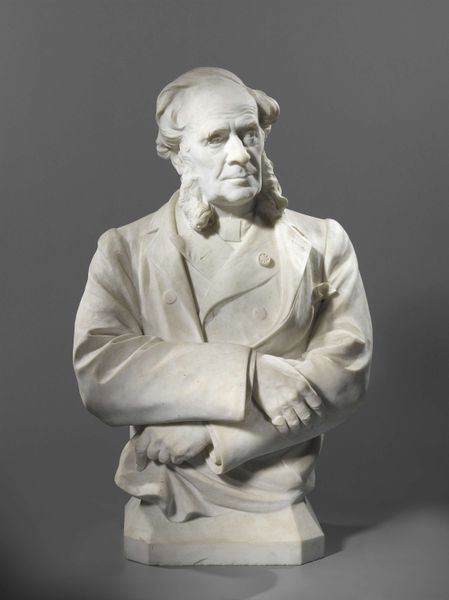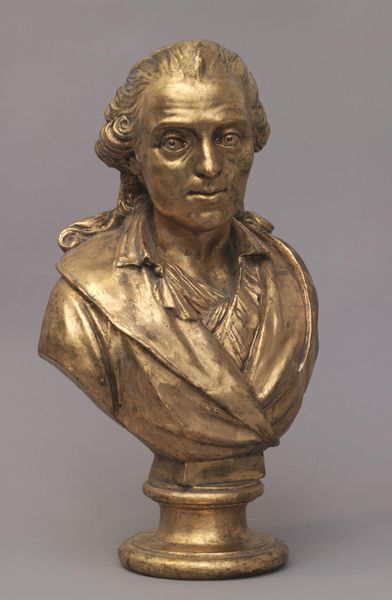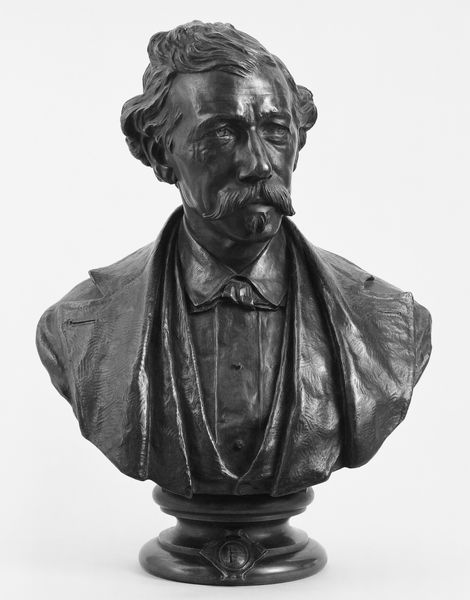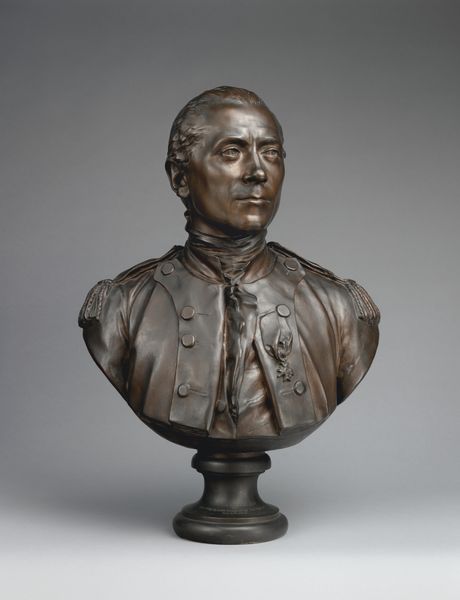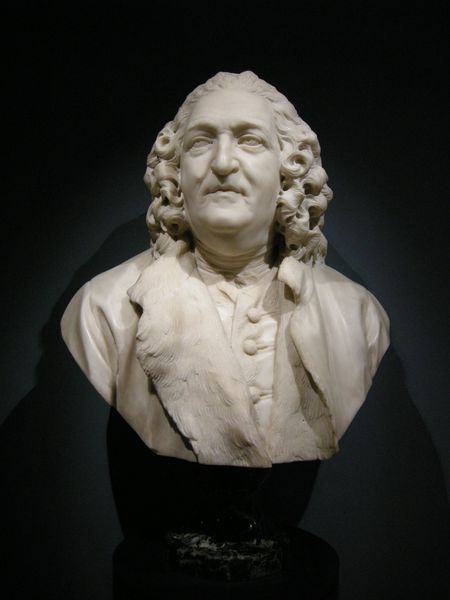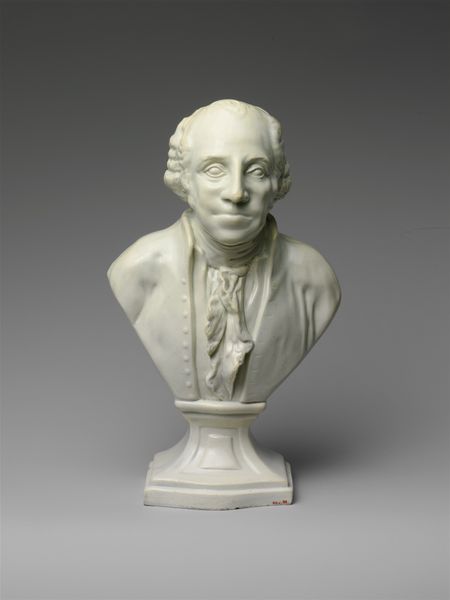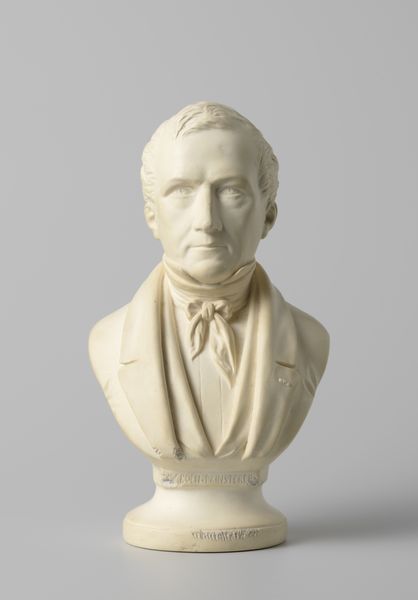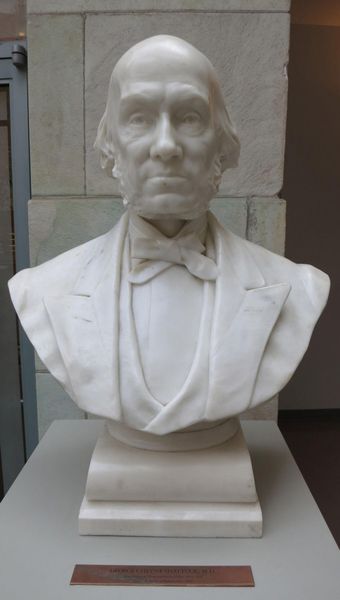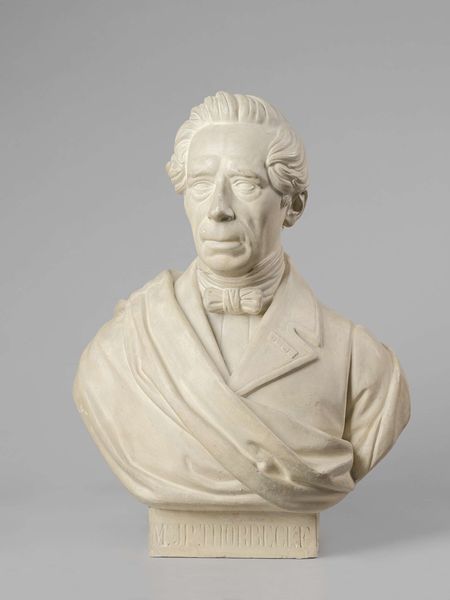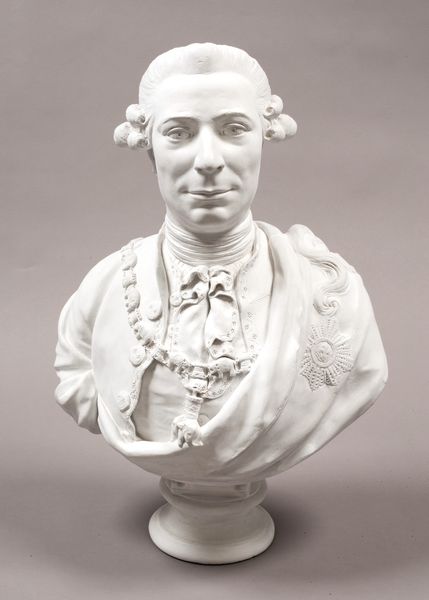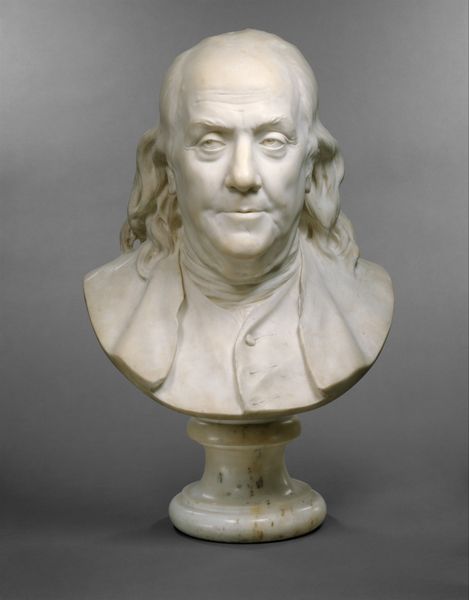
carving, bronze, sculpture
#
portrait
#
neoclacissism
#
carving
#
sculpture
#
bronze
#
sculpture
#
academic-art
Copyright: Public domain
Curator: Here we have Jean-Baptiste Pigalle’s bronze sculpture of Jean-Rodolphe Perronet, completed around 1785. It’s an interesting piece that really reflects the Neoclassical style. Editor: My first impression is one of quiet power. There’s a restrained intensity in his gaze and in the way his jaw is set that seems quite deliberate. The dark bronze enhances that gravitas. Curator: Absolutely. Perronet was a renowned bridge builder, and this portrait encapsulates that status perfectly. But it's vital to consider the sociopolitical context in which Pigalle was working. The late 18th century in France was a period of great upheaval, and this bust, like so many other works of the time, engages with notions of power, legacy, and revolution, however subtly. Editor: I'm immediately drawn to the symbolism in the details—the careful rendering of the wig, for example. It speaks of status, but it also speaks to a performative aspect of identity. The wig and formal attire served as an external expression of established norms during this time period. Curator: Precisely. Pigalle isn't simply depicting Perronet; he's creating an emblem. He wants us to understand how Perronet aligns—or perhaps deliberately sets himself apart—from certain political trends of the moment. Looking at the history, one is compelled to note his contribution to the École des Ponts et Chaussées, or National School of Bridges and Highways, and consider how figures like Perronet facilitated France's transportation system at the expense of more just distributions of economic resources. Editor: This piece embodies contradictions; on one hand we have his stern, knowing eyes representing accumulated wisdom; but in constrast the rigid formality of his presentation reflects an entrenched, perhaps ossified social hierarchy. I think viewers need to consider whether he, even through representation in art, has truly earned his serious stature, or if it's more complex than that. Curator: Indeed, the artist, by fixing him permanently in bronze, asks future viewers to remember, to critique, and to evaluate his life and his labor. Editor: Examining symbols alongside sociopolitical factors gives us deeper appreciation of the piece as well as its lasting resonance. Curator: It leaves you contemplating what success, and who history remembers, looks like then, and now.
Comments
No comments
Be the first to comment and join the conversation on the ultimate creative platform.
